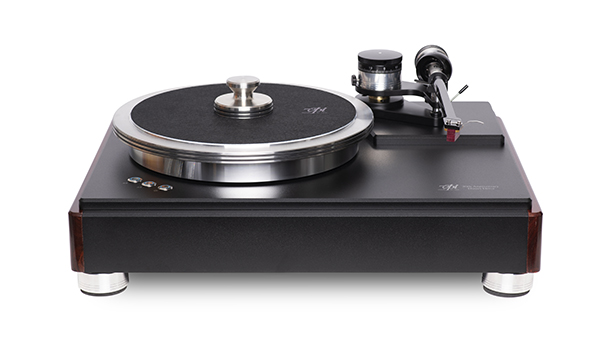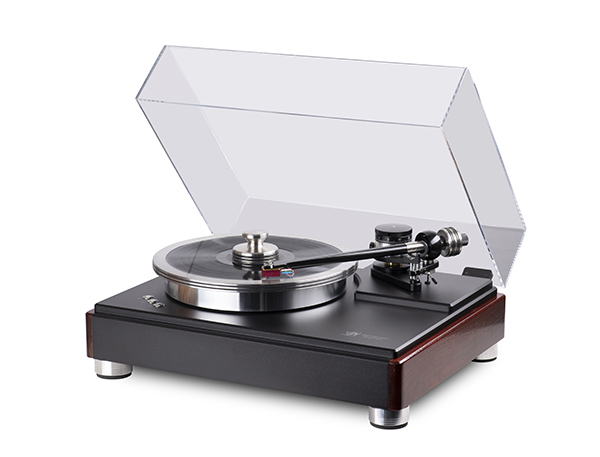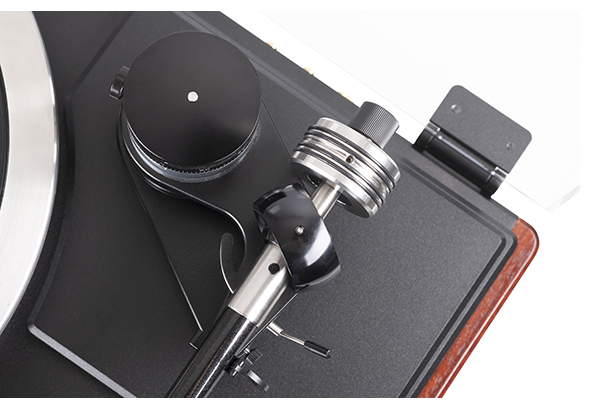VPI Ditches the belt: The HW-40 Direct Drive Turntable
By Jeff Dorgay A few years ago, we put VPIs direct drive turntable on our cover, giving it a product of the year award.
A few years ago, we put VPIs direct drive turntable on our cover, giving it a product of the year award.
It was a brilliant design exercise, offering incredible sound, but VPI had some supply issues with the direct drive motor, and had to discontinue production. However, it opened the doors of perception for both Mat and Harry Weisfeld, once they saw what a well-executed direct-drive turntable could achieve.
Audiophile purists that scowl like the red angry bird when contemplating direct drive over belt drive usually haven’t heard a contemporary direct drive table. (isn’t that how life in our world usually goes?) Way too often their only point of reference is that Technics SL-1200 they think they remember from college days, or the stigma surrounding the SL-1200 because it was used as a “DJ table.”
Like so many other technologies, direct drive utilizing modern materials and construction is not not only a formidable competitor, but done properly, exceeds the resolution of the best belt drive tables. Brinkmann Audio and Grand Prix Audio both make such a table, and we use them both as references. The legendary Technics SP-10 with power supply upgrades, and the newest version are both exceptional too. That first VPI direct drive was up there with the big boys too, we were sad to see it go. Evidently, so were they.
The direct difference
What well implemented direct drive offers that the belt drive tables often do not, is superior speed accuracy. This leads to a lower noise floor and a level of pitch stability that rivals CD or SACD. Now you can have that speed accuracy that you crave from digital, with the tonal richness that is more often than not, easier to get from analog.
Where the original direct drive VPI tipped the scale at a fairly heavy $30k, the current table has a much lower MSRP of $15,000. Always a nice thing. Thanks to expanding their engineering staff with veteran Mike Bettinger, direct drive stayed on the table. VPI’s Mat Weisfeld tells us, “Mike took Harry Weisfeld’s original design and made it more efficient. Most important, by taking advantage of the latest in cutting edge motor technology, he made the table easier to build in quantity – something that plagued the original design.
This allowed us to build 400 motors out of the gate, and pass a cost savings on to our customers. Direct drive speaks to VPI’s roots – Harry built the HW-9 for Denon’s direct drive motor back in the late 70s/early 80s. So, it’s always been in our blood.”
I’ve switched to direct drive with my two reference turntables, and there’s a definite clarity to the presentation that isn’t there to the same extent with the best belt driven tables. If you happen to be blessed with perfect pitch (I am not) the pitch stability that the best direct drive tables will give you a new musical perspective. More than one pitch-perfect acoustic music lover has remarked that they can’t deal with the instability that belt drive offers.
The HW-40 is no slouch in this department. Queing up George Winston’s Winter,with it’s solitary, lingering notes has a solidity that the belt drives, even VPI’s can’t match. A similar effect is easily noticed when listening to violin recordings, the tonal subtleties in both the piano and violin’s decay pattern is unmistakably more solid and organic sounding through the VPI.
VPI’s 3D printed Fatboy tonearm has been a favorite upgrade with legacy owners, but they’ve offered an interesting variation on the theme with the Direct Drive – a gimbaled arm. As someone who’s owned VPI’s for an incredibly long time, I’m still a bit uncomfortable with the relative ease that the arm can be bumped from its pedestal. Especially when a Koetsu, Atlas, or other 5 figure cartridge is mounted.
The gimbal variation makes the proposition a bit more solid, and confidence inspiring to mount up a few more cartridges and get back to work. VPIs manual is very straightforward, and you should have your table up and running quickly. Running the 12-inch arm through the Analog Magik software suite makes a world of difference, all for the better. In theory, a 12-inch tonearm can provide lower tracking/tracing error, however that’s only if it’s set up properly.
Improper setup exaggerates the errors, due to the longer arm wand, and perhaps this is why the longer arms don’t always deliver on the promise. Once optimized, the gimbaled Fatboy is exceptional.
Spending time with the Lyra Atlas, Koetsu Onyx Platinum and the new Ultra Eminent EX from My Sonic Lab is an analog delight, with the Fatboy/DD combination easily bringing out the personalities of these fine cartridges. Those with multiple cartridge setups might want to have their direct drive fitted with a standard Fatboy so they can exchange armwands with multiple cartridges.
Back to the listening chair
If the direct drive feel grabs you, it’s tough to unhear it. The clarity offered by the speed stability offers such a neutral music delivery platform to start with, it’s so easy to fine tune the tonality to your liking from there. The Koetsu Onyx Platinum, paired with BAT’s new VK-P12SE phono stage provided a level of sonic perfection that I found tough to beat, offering a few clicks of warmth, combined with a massive soundstage and a well defined bottom end.
Our recent installation of a six pack of REL no.25 subwoofers (and the incredible amount of low-frequency resolution they provide) made the HW-40s locked in bottom end even more prominent. I’ll go out on a limb and declare that the better your system is dialed in to reproduce low frequencies, the more you will appreciate the HW-40. To further take advantage of the HW-40s capabilities, keep in mind that it is a non suspended design, so it will give the most LF extension on a premium rack, or even wall mounting.
We had excellent results on the top of a Grand Prix Audio Monaco rack, and a SolidSteel wall shelf, thoroughly anchored to the wall studs. Keep in mind, this baby weighs about 75 pounds, so don’t even think about using wall anchors.
Properly set up and secured, further listening leads to bass heavy recordings, because the HW-40 delivers a full palette of low frequency information, and the resulting drama that this brings to the music. Beginning with the three LP set of the classic K&D Sessions, “Bug Powder Dust” squeezes me back into my listening chair. The opening bass line in Led Zeppelin’s “Dazed and Confused” takes on new meaning with the amount of sheer LF texture the HW-40 provides.
But don’t think we’re just rattling the walls with bass. From the bottom of the frequency range to the top, the HW-40 paints a large sonic canvas. Small details hang in the air, and deeply layered recordings reveal treats you might have missed on a lesser table. No matter what kind of music you love, the HW-40 does a fantastic job.
A distinct lack of bling
The HW-40 reminds me of staffer Jerold O’Brien’s new silver Audi RS3. On the outside, it’s looks plain as plain can be, but when you turn the key, this sixty-thousand dollar car delivers the performance envelope of a two hundred thousand dollar car. This is what I love about the HW-40 – it’s all performance. While VPI’s Avenger is a much more mechanically complex beast (and offers the ability to use three tonarms, which is totally cool) I like simplicity. And I love the level of performance the HW-40 delivers at the price.
No doubt you’ve got your own opinion, and fortunately VPI offers both. At the end of the day, I’m hooked on the presentation of direct drive and while there are a few much more expensive tables that reveal slightly more resolution, the overall effect of the HW-40 is unbeatable for 15k.
Hence, we are happy to award the VPI HW-40 direct drive table one of our Exceptional Value Awards for 2019. This is the biggest portion of cost no object analog we’ve had the pleasure to experience for $15k.
We would like to thank VPI Industries for the accompanying photos.
 The VPI HW-40 Direct Drive Turntable
The VPI HW-40 Direct Drive Turntable
$15,000
Peripherals
Cartridge Koetsu Onyx Platinum, My Sonic Lab Ultra Eminent EX, Lyra Atlas
Phonostage BAT VK-P12SE, Boulder 508, Pass Labs XS Phono, ARC REF Phono 3
Preamplifier Pass Labs XS Pre
Power Amplifier Pass Labs XA200.8
Speakers Quad 2812, Focal Sopra no.3, Focal Stella Utopia EM Evo with six REL no.25 subwoofers
Power PS Audio P20 and P15 power conditioners
Cable Cardas Clear and Tellurium Q Reference



